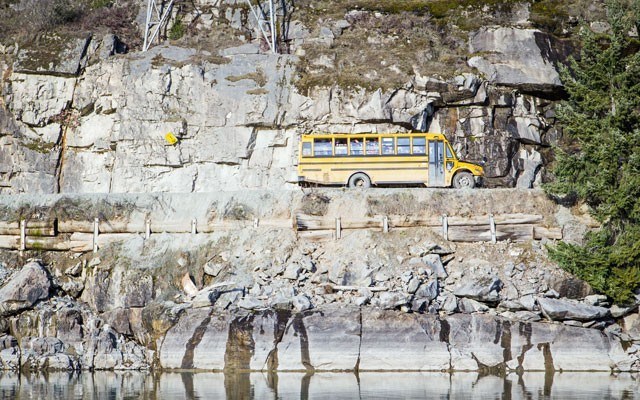At the beginning of May, hundreds, if not thousands of people got stuck on the Sea to Sky highway for several hours due to severe accidents closing the road.
After one lengthy closure, requesting safety upgrades for the road gained more than 1,400 signatures. The extended closure sparked a debate on what to do about the highway, which left longtime residents with a faint .
While I hope the province will continue to make safety modifications to the Sea to Sky highway, like increased warning signage, I still have concerns regarding the single-option route connecting the Sea to Sky to the Lower Mainland.
It’s no secret that if a natural disaster, like a wildfire, requires the rapid or Pemberton, the route south will be overwhelmed.
During southbound highway closures, the recommended detour from Whistler to Vancouver takes about six hours, and requires heading over the Coast Mountains to Lillooet, then down through Lytton and the Fraser Canyon, before finally arriving in the Lower Mainland.
I’m not the only one thinking about a shorter alternate route south.
For decades now, the Lower Stl’atl’imx First Nations have advocated (FSR), which connects several isolated rural communities, including Port Douglas, Tipella, Skatin, Lillooet Lake Estates, and Heather Jean Properties to the Pemberton Valley.
The road is vital in connecting these communities to essential services such as health-care, food, and education. The In-SHUCK-ch Nations, made up of the Samahquam and Skatin First Nations, recognized the significance of the road, and made upgrades a crucial part of treaty negotiations from 2005 to 2015.
Although the province has constructed since those negotiations halted, the road still needs to be improved in several areas. If the further West Harrison Lake FSR to the Lower Mainland is included, the situation is even worse, with washouts, potholes and poor conditions all common occurrences.
To get from Harrison Mills to Pemberton right now, assuming everything runs smoothly on the West Harrison and In-SHUCK-ch FSRs, it can take four to five hours to cover the 193-kilometre distance. If brought up to a paved, two-lane highway standard, that journey time will shrink significantly, and provide a second route to the Sea to Sky.
There are several reasons why upgrading the road makes sense, the most important being reconciliation. Anything that helps B.C.’s isolated First Nations gain economic prosperity and better access to essential services is a win for both the province and the wider region.
Then there’s the need for a true backup route for the Sea to Sky in case of emergencies. Take the floods that plagued the province in late 2021, for example. The flooding resulted in the closure of three out of the four main roads between the Interior and the Coast for extended periods, highlighting the importance of alternate routes to mitigate the impact of similar disaster scenarios.
Road improvements are also necessary as traffic picks up on the In-SHUCK-ch. Over the past few years, visitors to the area have , particularly during the pandemic; in 2020, the road saw 146,000 daily users annually, a 45-per-cent increase from 101,000 in 2016. Moreover, Pemberton and Whistler are growing at , resulting in further pressure on the popular FSR as people search for less-crowded recreational areas.
The high cost of such a road upgrade is of course one of the main reasons it hasn’t happened yet.
A 2016 feasibility study by the province and the First Nations estimated that a two-lane paved highway upgrade would cost . Comparatively, the completed upgrades to the Sea to Sky highway for the 2010 Olympic Games cost about $600 million.
While this is a significant amount of capital, it’s an investment that will pay itself off in the long term. With a better connection, opportunities will open up along the new highway for everyone along the route.
By the same token, the increased traffic and backcountry recreation that will come with such an upgrade must also be taken into account, and the will of the affected First Nations must take the lead on that discussion.
I believe the positives outweigh any potential drawbacks. But those who live in the corridor have heard this discussion before.
“I’ve lived in Pemberton long enough that I’ve experienced at least three occasions where the highway was closed at length,” former Pemberton mayor and current MLA Jordan Sturdy told Pique in 2015.
“A true alternate route back to the Lower Mainland would be of tremendous value to the corridor.”
His words still ring true.




